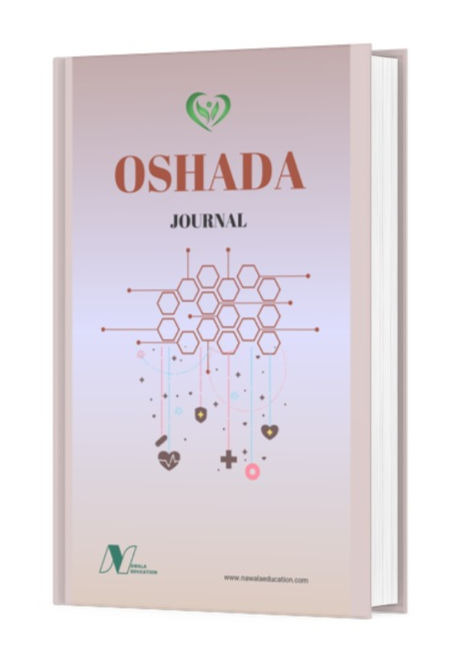Social and Economic Factors Affecting the Incidence of Anemia in Pregnant Women
DOI:
https://doi.org/10.62872/sx2ey215Keywords:
Anemia, pregnant women, social factors, economic factorsAbstract
Anemia in pregnant women is a significant health problem, with adverse effects on the health of the mother and baby. This study aims to identify social and economic factors that affect the incidence of anemia in pregnant women in certain regions. Quantitative approach with cross-sectional design was used to collect data through questionnaires and structured interviews on 200 pregnant women. Factors analyzed include education, family income, type of employment, access to health services, and diet. The results showed that low levels of education, low family income, and limited access to health services were significantly associated with an increased risk of anemia in pregnant women. In addition, social support factors also play an important role in preventing anemia. These findings suggest that social and economic factors interact, with lower education associated with lower incomes, which in turn hinders pregnant women's access to good nutrition and adequate health care. Based on the results of the study, it is suggested that the health policy of pregnant women more emphasis on nutrition education, increased access to health services, and economic empowerment, especially among low-income families. This study provides an important contribution in formulating intervention programs that can reduce the prevalence of anemia in pregnant women in Indonesia.
Downloads
References
Abd Rahman, R., Idris, I. B., Isa, Z. M., Rahman, R. A., & Mahdy, Z. A. (2022). The prevalence and risk factors of iron deficiency anemia among pregnant women in Malaysia: a systematic review. Frontiers in nutrition, 9, 847693.
Abriha, A., Yesuf, M. E., & Wassie, M. M. (2014). Prevalence and associated factors of anemia among pregnant women of Mekelle town: a cross sectional study. BMC research notes, 7, 1-6.
Ambas, J., Siyamsih, D., Sari, D. R., Rosmaria, R., & Azmi, S. D. (2024). The Role of Community Health Nurses in Overcoming Dengue Hemorrhagic Fever Outbreaks in Densely Populationd Housing. Oshada, 1(3), 84-88.
Bansal, R., Bedi, M., Kaur, J., Kaur, K., Shergill, H. K., Khaira, H. K., & Suri, V. (2020). Prevalence and factors associated with anemia among pregnant women attending antenatal clinic. Adesh University Journal of Medical Sciences & Research, 2(1), 42-48.
Bencaiova, G., Burkhardt, T., & Breymann, C. (2012). Anemia—prevalence and risk factors in pregnancy. European journal of internal medicine, 23(6), 529-533.
Chowdhury, H. A., Ahmed, K. R., Jebunessa, F., Akter, J., Hossain, S., & Shahjahan, M. (2015). Factors associated with maternal anaemia among pregnant women in Dhaka city. BMC women's health, 15, 1-6.
Gebre, A., & Mulugeta, A. (2015). Prevalence of anemia and associated factors among pregnant women in North Western Zone of Tigray, Northern Ethiopia: A cross‐sectional study. Journal of nutrition and metabolism, 2015(1), 165430.
Getachew, M., Yewhalaw, D., Tafess, K., Getachew, Y., & Zeynudin, A. (2012). Anaemia and associated risk factors among pregnant women in Gilgel Gibe dam area, Southwest Ethiopia. Parasites & vectors, 5, 1-8.
Iriani, F. A., & Dehi, R. I. (2024). Repellent Activity Testing of an Essential Oil Gel Preparation of Cinnamon (Cinnamomun Burmanii) Bark) And Kaffir Lime Peel (Citrus Hytrix) Against Aedes Aegypti Mosquitoes. Oshada, 1(3), 89-101.
Karami, M., Chaleshgar, M., Salari, N., Akbari, H., & Mohammadi, M. (2022). Global prevalence of anemia in pregnant women: a comprehensive systematic review and meta-analysis. Maternal and child health journal, 26(7), 1473-1487.
Kefiyalew, F., Zemene, E., Asres, Y., & Gedefaw, L. (2014). Anemia among pregnant women in Southeast Ethiopia: prevalence, severity and associated risk factors. BMC research notes, 7, 1-8.
Lebso, M., Anato, A., & Loha, E. (2017). Prevalence of anemia and associated factors among pregnant women in Southern Ethiopia: A community based cross-sectional study. PloS one, 12(12), e0188783.
Nagar, R., & Rachel, A. (2018). Incidence and outcome of anemia in pregnant women: a study in a tertiary care centre. International Journal of Reproduction, Contraception, Obstetrics and Gynecology, 7(2), 463.
Noronha, J. A., Al Khasawneh, E., Seshan, V., Ramasubramaniam, S., & Raman, S. (2012). Anemia in pregnancy-consequences and challenges: a review of literature. Journal of South Asian Federation of Obstetrics and Gynecology, 4(1), 64-70.
Prakash, S., Yadav, K., Bhardwaj, B., & Chaudhary, S. (2015). Incidence of Anemia and its Socio-demographic determinants among pregnant women attending for antenatal care: A cross sectional study. International Journal of Medical and Health Research, 1(3), 12-17.
Siteti, M. C., Namasaka, S. D., Ariya, O. P., Injete, S. D., & Wanyonyi, W. A. (2014). Anaemia in pregnancy: Prevalence and possible risk factors in Kakamega County, Kenya. Science journal of public health, 2(3), 216-222.
Viveki, R. G., Halappanavar, A. B., Viveki, P. R., Halki, S. B., Maled, V. S., & Deshpande, P. S. (2012). Prevalence of anaemia and its epidemiological determinants in pregnant women. Al Ameen J Med Sci, 5(3), 216-23.
Downloads
Additional Files
Published
Issue
Section
License
Copyright (c) 2024 Erna Eka Wijayanti, Yudhi Anggoro, Nurul Hidayati, Munawarah Munawarah (Author)

This work is licensed under a Creative Commons Attribution-ShareAlike 4.0 International License.

This work is licensed under a Creative Commons Attribution-ShareAlike 4.0 International License.











